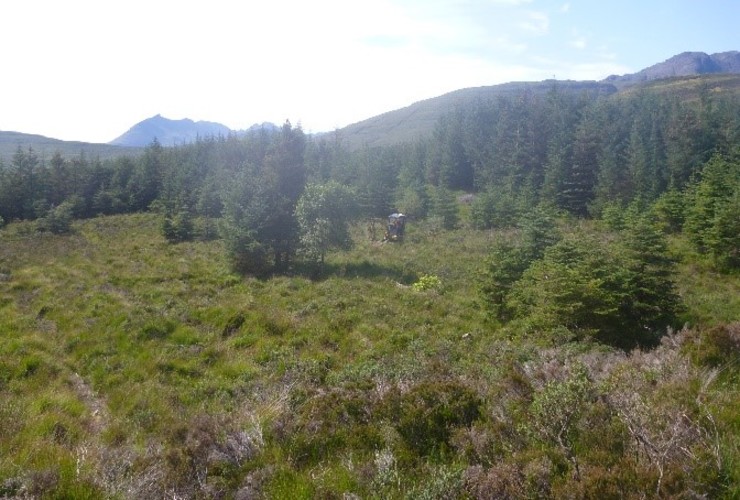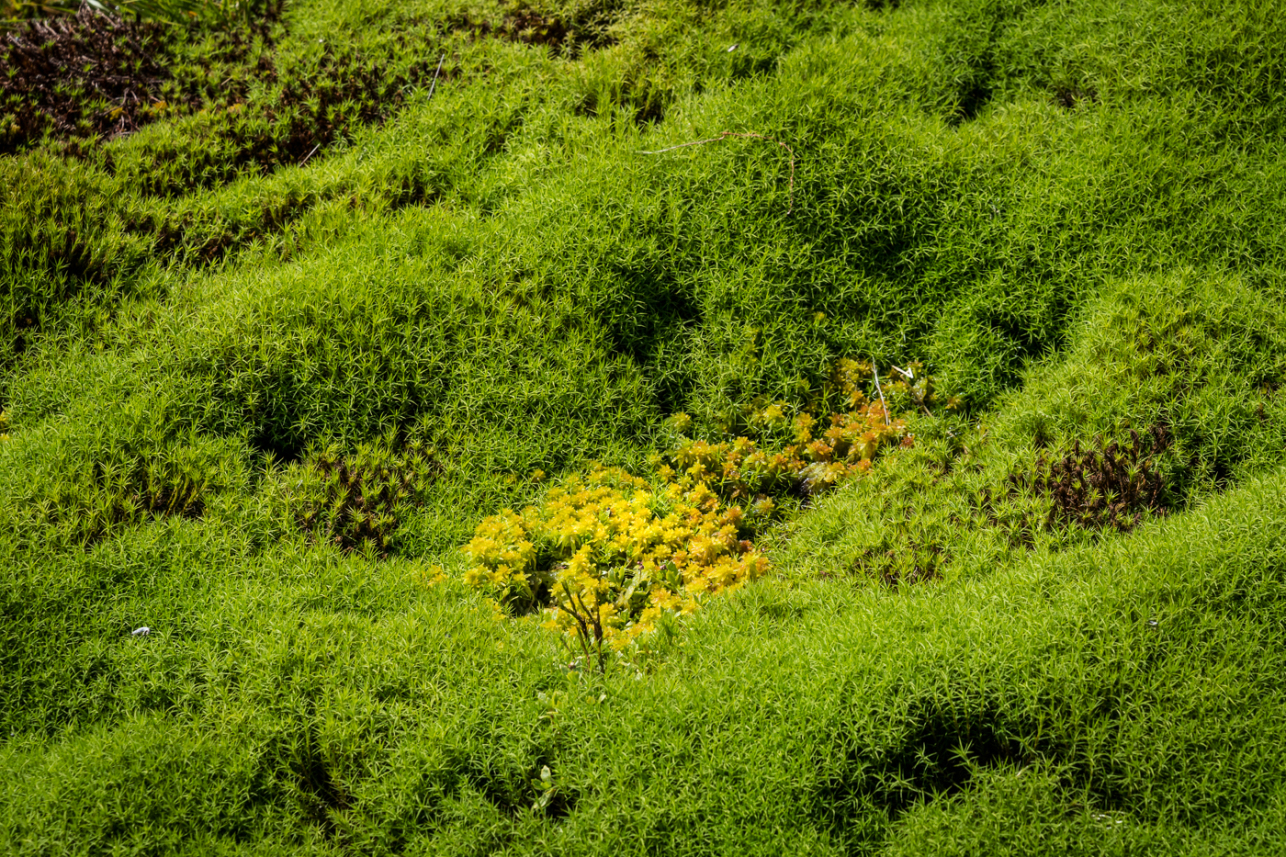Field Notes: For peat's sake
Skye Conservation Officer Cathryn Baillie celebrates progress on our peatland restoration project

Much of the land we own on Skye contains peat - some of which is in pristine condition, protected by law, and some has been damaged by poor management, or unsuitable activities, over the decades. Where there is an opportunity to undo the damage caused, we are working to restore the peatbogs and re-establish natural processes.
Our main project involves the restoration of 36.5 hectares of peat bog near Bla Bheinn in Strathaird. Currently we are removing an estimated 1,000 tonnes of timber before beginning work on repairing the ground and raising the water table. After years of planning, involving consultants and a successful bid for grant funding, we are delighted that this project is finally underway and look forward to the day that we see the peat bog begin to recover.
The work involves specialist contractors and big machines with massive tracks to distribute the weight and prevent damaging the surface vegetation. We hope that by March 2021 we will be able to withdraw from the site and let nature take its course, with only moderate maintenance to keep any regenerating Sitka spruce in check.
On a smaller scale, we are also working to restore the peatlands elsewhere in Strathaird. Where we find small pockets of degraded deep peat, our land team are quietly chipping away at the damage. No big machines, no press releases, no grant funding but no less important. These small steps continue to help us towards our targets to repair the land in our care.
The processes are the same: we remove inappropriate conifers, followed by ditch blocking and ground smoothing. This raises the water table to the surface of the bog and enables plants to grow. Sphagnum mosses can play a significant role in shaping the environment, they grow together in beautifully coloured carpets that can absorb massive amounts of water, creating ideal conditions for some of the UK's most specialised lifeforms like the carnivorous sundew or butterwort plants that we find here.
Many species of insects also depend on the waterlogged conditions, spending most of their lives under water before emerging as adults to breed. They in turn, support a wide range of species including fish, reptiles, amphibians, birds and mammals, and some our most endangered wildlife relies on a healthy peatland ecosystem to flourish.
By restoring our peatlands, we can reduce greenhouse gas emissions, capture carbon dioxide and help to protect our precious wildlife for future generations.
Fast facts about slow-growing peat bogs
- More than 20 per cent of Scotland is covered in peat, that’s around 1.7 million hectares. Unfortunately, around 80 per cent of Scottish peatlands are damaged. Degradation occurs where peatlands are drained, and sometimes burned, for urbanisation, agriculture, forestry or energy. When the water table is lowered and the peat dries out, the organic matter is open to the air and starts to decompose. This process emits greenhouse gases which contribute to global warming and climate change.
- Peatlands cover only three per cent of the earth’s surface yet they account for 30 per cent of the world’s carbon store - one hectare of peat can store up to 70 tonnes of carbon per year. As well as being a carbon sink, peatlands improve water quality, reduce the risk of flooding and provide a rich habitat for some of our most rare and threatened species.
- Peat occurs in wetlands where organic matter cannot fully decompose due to the lack of oxygen. It can take a year or so for peat to build up by just one millimetre.
- Healthy peatbogs consist of two layers: the acrotelm and the catotelm. The acrotelm is the thin, living, surface layer of peat forming vegetation such as sphagnum mosses, usually up to 40cm thick. The catotelm is where the peat is stored, it is relatively inactive, permanently water-logged and can be several metres deep.
- Peat that is subjected to many years of pressure and heat in the ground will eventually turn into coal.
Work to restore 36.5 hectares of peat bog at Strathaird is taking place thanks to funding from NatureScot’s Peatland Action Fund.
Photograph by Cathryn Baillie


